Horse Chores For Your Springtime Checklist
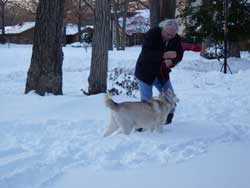 It’s amazing how just a few weeks can impact the weather. At the first of February, northern Oklahoma had it’s second ever blizzard warning. Where I live, there was a record 25″ of snow. Just a few miles north, there was a record setting 50″ and that area also set the record for the coldest temperature of -23°F. There was snow for over 2 weeks, which is also out of the normal for Oklahoma.
It’s amazing how just a few weeks can impact the weather. At the first of February, northern Oklahoma had it’s second ever blizzard warning. Where I live, there was a record 25″ of snow. Just a few miles north, there was a record setting 50″ and that area also set the record for the coldest temperature of -23°F. There was snow for over 2 weeks, which is also out of the normal for Oklahoma.
Now, the temperature was close to 80°F today and the daffodils in my yard have been in bloom for about 2 weeks. We had our first actual thunderstorm just a few days ago. Spring is officially around the corner! So, it may be a good time for some spring chores. Here are some chores that you may want to do.
At the barn:
- Clean and condition your leather tack. Make sure the leather is dry before applying a leather conditioner.
- Inspect the leather for any cracks, cuts or splits. Replace any leather that is damaged.
- Go through your grooming kit. Replace any tools that are broken. This would probably also be a good time to wash your brushes.
- Clean your clippers. You can do this yourself or take them to a professional. You can also have the blades sharpened at the same time.
- Wash your winter blankets, if you are not going to need them anymore. Store them in a dry place. Most blankets come in a zippered plastic bag. I have kept these to store my blankets for the summer. This makes for good dust free storage.
- A warm dry spring day would be perfect to strip your stall completely (if you have one). Let them air out for a few hours before you put bedding back in them. If you have full board, this is probably done periodically through the year.
- Give your trailer a good cleaning. Do a thorough inspection and make note of any damage to floors/walls/ceiling/tackroom, worn tires, damaged lighting/wiring, etc. Make a plan and time frame to get damage fixed.
For the vet:
- Get vaccinations, if you haven’t already done so. Check with your vet as to which basic vaccinations are recommended for your area. Your vet may also have suggestions for additional vaccinations based on the age of your horse and also whether or not you show or trail ride.
- Don’t forget to get the Coggins test. A negative Coggins is required if you plan to show, trail
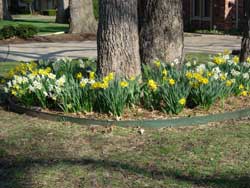 ride or take your horse to a riding clinic. Most events want a Coggins that was done within a year, but a few require one that has been done within 6 months of the event.
ride or take your horse to a riding clinic. Most events want a Coggins that was done within a year, but a few require one that has been done within 6 months of the event. - Spring is also when I have my horses’ teeth checked and, if necessary, floated.
- My gelding will have his sheath cleaned, if needed.
There is a multitude of chores that you can do in the spring. This is just a small sample. Plan a work day and make a list of what you want to accomplish that day. If you don’t finish your list, add it to the next planned work day. Don’t try to do everything all in one day . . . . your body won’t like it.

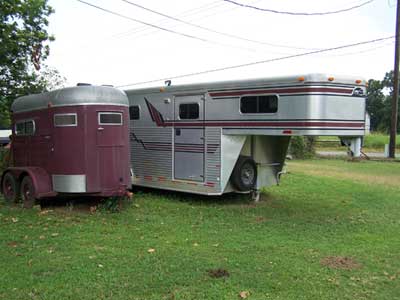 Dollar is my 6 year old palomino gelding. I named him after the horse John Wayne rode in his movies. Never mind that the movie Dollar was a sorrel, I am just one of those avid “Duke” movie fans. Anyway, Dollar is just about as laid back as a horse can get. I haven’t found anything that bothers him. He also has as much curiosity as any cat. He’s always looking to see what you are doing and at times it seems like he would really rather help you with whatever it is you’re doing. He’ll walk along side of the tractor while the pasture is being mowed looking like he’s trying to tell you how to drive & mow. He stands guard by a ladder while you are on the roof. He also likes to floss his teeth with the tail of the lead rope you have him tied with.
Dollar is my 6 year old palomino gelding. I named him after the horse John Wayne rode in his movies. Never mind that the movie Dollar was a sorrel, I am just one of those avid “Duke” movie fans. Anyway, Dollar is just about as laid back as a horse can get. I haven’t found anything that bothers him. He also has as much curiosity as any cat. He’s always looking to see what you are doing and at times it seems like he would really rather help you with whatever it is you’re doing. He’ll walk along side of the tractor while the pasture is being mowed looking like he’s trying to tell you how to drive & mow. He stands guard by a ladder while you are on the roof. He also likes to floss his teeth with the tail of the lead rope you have him tied with.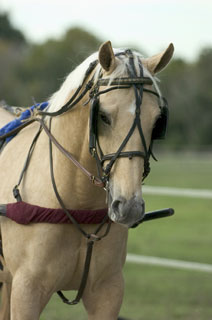 The Palomino Youth World Show is now in full swing. If you live in the Tulsa Oklahoma area, THIS IS A MUST SEE!!!! No where else can you see so many beautiful golden horses in one place. No where else can you see so many different variations of the golden horse. Whether you like trail, English, Western or Halter, there is a class that will catch your attention. Come out to the Tulsa fairgrounds and see the kids guide these horses around the arena and put them through their paces. Go to
The Palomino Youth World Show is now in full swing. If you live in the Tulsa Oklahoma area, THIS IS A MUST SEE!!!! No where else can you see so many beautiful golden horses in one place. No where else can you see so many different variations of the golden horse. Whether you like trail, English, Western or Halter, there is a class that will catch your attention. Come out to the Tulsa fairgrounds and see the kids guide these horses around the arena and put them through their paces. Go to 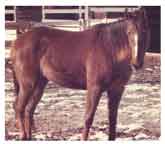
 This is where I come in. I had never owned a horse, I had never taken care of a horse and I had only ridden a few backyard pets that my friends had. I was a stupid 20 something and was just as horse crazy then as when I was at 4. Oh yeah, I was also recuperating from a very bad fall off a lesson horse trying to learn how to jump fences. I was told Iggette was going to the sale barn and I just couldn’t let that happen. I talked my husband into buying her. I wasn’t sure what I was going to do with her, but I knew I couldn’t let her go to the sale where she might end up in the hands of the killers. I bought her without even going to look at her first. This is how I became a novice owner.
This is where I come in. I had never owned a horse, I had never taken care of a horse and I had only ridden a few backyard pets that my friends had. I was a stupid 20 something and was just as horse crazy then as when I was at 4. Oh yeah, I was also recuperating from a very bad fall off a lesson horse trying to learn how to jump fences. I was told Iggette was going to the sale barn and I just couldn’t let that happen. I talked my husband into buying her. I wasn’t sure what I was going to do with her, but I knew I couldn’t let her go to the sale where she might end up in the hands of the killers. I bought her without even going to look at her first. This is how I became a novice owner.
